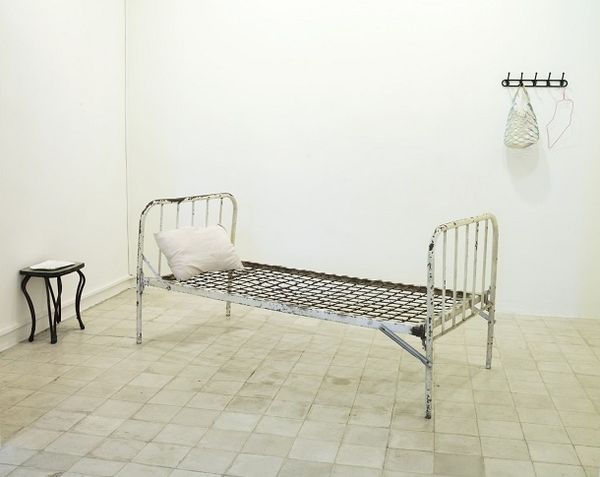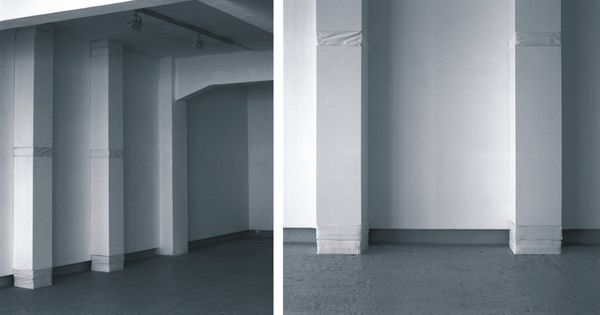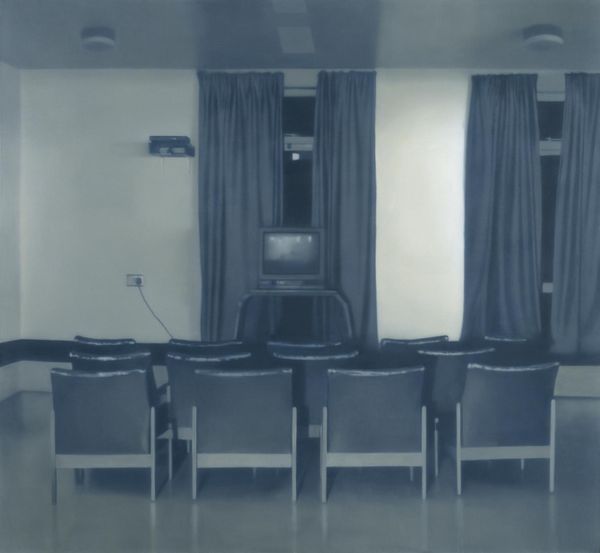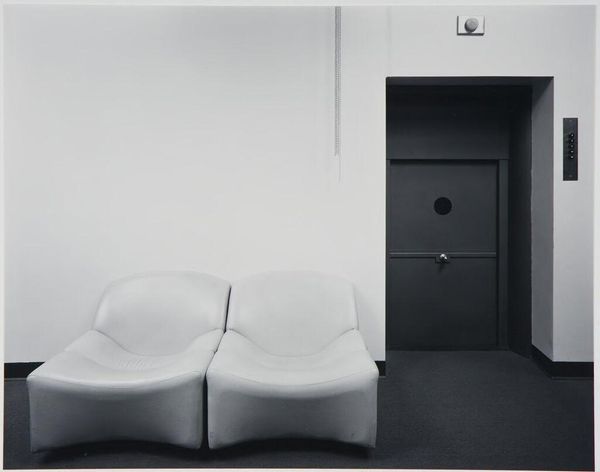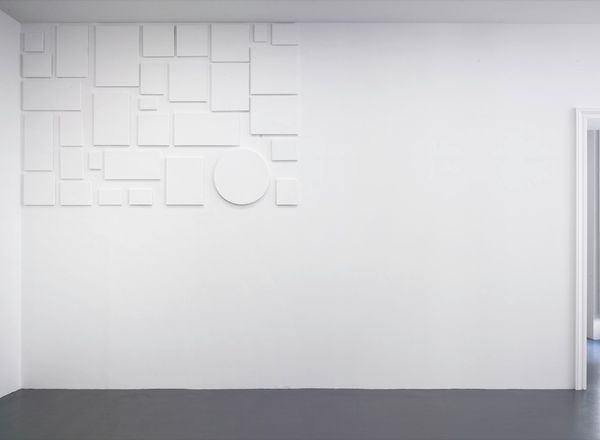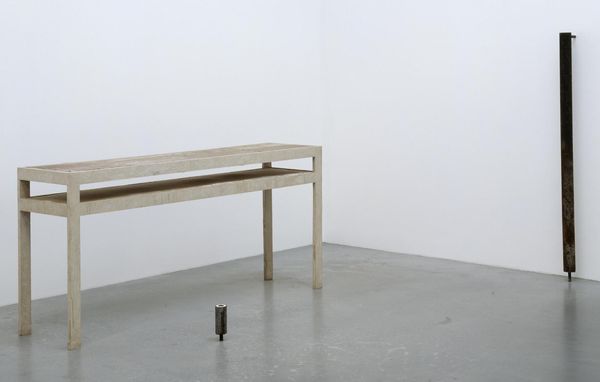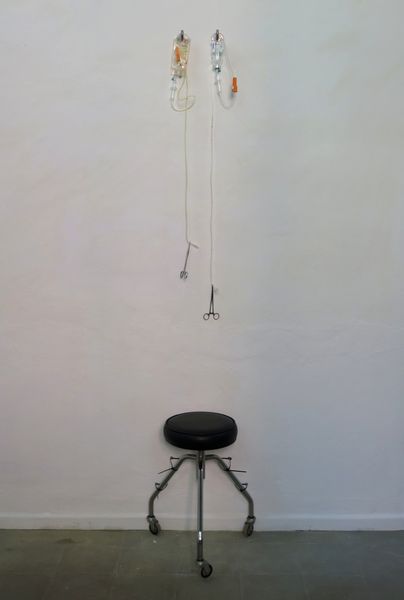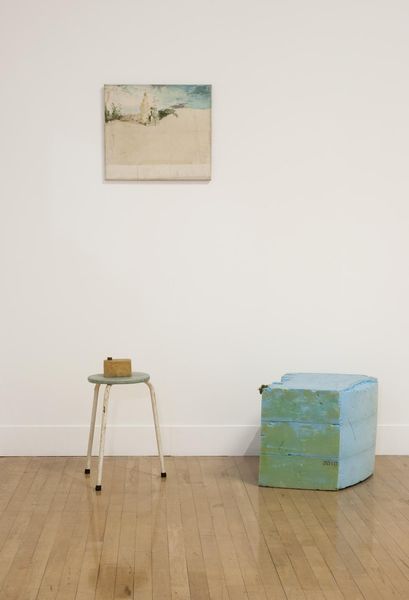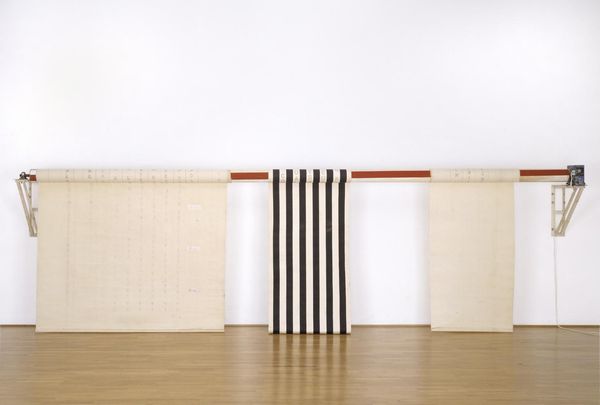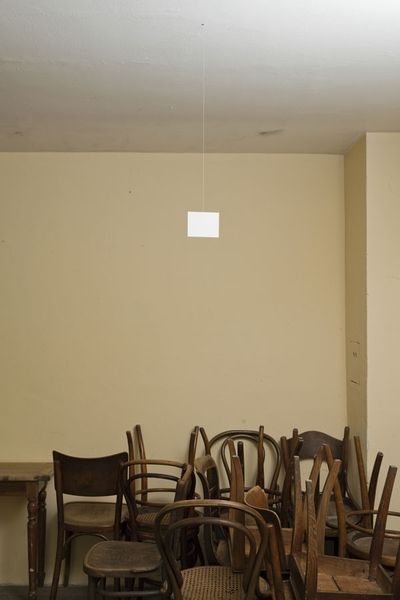
Copyright: www.guiadegrancanaria.org
Editor: This mixed-media artwork is "Obsolete" by Francis Naranjo from 2012. The white chair and surgical tools sitting beneath the inscription of the title creates a sterile and unnerving feel. I can't help but wonder, what statements is the artist trying to make about healthcare systems or society’s throw-away culture? How do you interpret this work, focusing on its institutional critique? Curator: It's fascinating how Naranjo uses such stark minimalism to engage with complex socio-political issues. The gallery setting, likely a white cube space, immediately frames our interpretation. Think about the chair: it’s a common object, almost a placeholder for a patient or perhaps even a bureaucrat within a medical institution. Placed under the word "obsolete," it suggests that even the most ubiquitous objects or systems can become outdated. Do you see how the clinical tools on the seat create a narrative? Editor: Yes, now that you mention it. The clinical tools positioned on the chair suggest not only an outdated object or system, as the “obsolete” suggests, but also an anxiety surrounding our reliance on medical advancements. Is the artist saying that we risk becoming reliant on technology in a way that will lead us down an unsafe and unhealthy path? Curator: Precisely. This critique of institutional dependency is further emphasized by the aseptic, almost sanitized environment depicted. Consider the role of art institutions themselves. How do they contribute to canonizing certain objects and practices, while simultaneously rendering others "obsolete?" What kind of power dynamics are at play here? Editor: That’s a great question! Thinking about the politics of imagery makes me look at it from a completely different angle now, I had not previously considered how the placement of this work inside of a gallery alters the narrative that it is telling. Thank you. Curator: It’s exciting to consider how an artwork can reflect the complex power structures shaping its context. By prompting this discussion, it is actively influencing our perspectives on how we engage with these critical institutions.
Comments
No comments
Be the first to comment and join the conversation on the ultimate creative platform.
